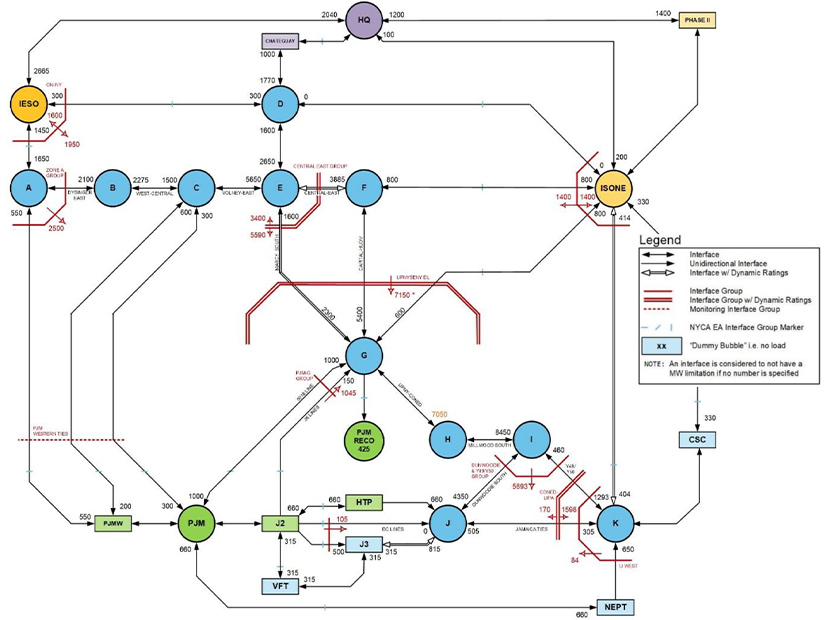IRM Modeling Updates Approved
The New York State Reliability Council’s Executive Committee on Friday approved the modeling assumptions for its 2024/25 installed reserve margin requirement study base case, including those for emergency assistance.
The committee approved both the final base case assumptions matrix — which sets parameters like load forecast, system topology and generation — and the final emergency operation procedures white paper, which examines how emergency assistance is accounted for in the IRM modeling and provides recommendations for improved operations.
The base case projects expected system conditions in New York, particularly during extreme weather events or major system failures, which could force the state to rely on neighboring jurisdictions like PJM to ensure reliability during emergency operations.
The base case is crucial for setting the state’s IRM, which represents the minimum level of capacity that NYISO market participants must procure through its capacity market.
The white paper serves as a five-year strategic plan focused on improving resource adequacy modeling. The report highlighted tightening reliability conditions in the state, particularly during winter conditions, and recommended that more emergency assistance be incorporated into IRM modeling in case of a future emergency.
Update on Environmental Regulations
Committee Chair Chris Wentlent provided updates on recent discussions with the New York Department of Environmental Conservation and EPA regarding upcoming environmental regulations at the state and federal levels.
Wentlent said the DEC indicated it may propose new rules to New York’s cap-and-invest program next year following a potential second round of informal stakeholder outreach for comments and recommendations. The department said the proposed rules would come after it produces either a white paper or fact sheets summarizing the feedback that helped inform its rulemaking process.
Wentlent also reported that EPA requested a call with the NYSRC to review the comments it submitted on the federal agency’s proposed power plant emissions rule. (See EPA Power Plant Proposal Gets Mixed Reception in Comments.)
The council had requested that EPA include “a reliability safety valve” in the final rule. “It’s important to have that flexibility because there’s no way for anybody to figure out all the potential outcomes with all the moving variables that are going on right now within the industry,” Wentlent said, citing load growth, the changing resource mix and the timing of new resources and infrastructure as some of the uncertainties.
The NYSRC also urged the agency to consider how its rules might impact the interactions between neighboring jurisdictions. Although New York is going green, the state’s grid is highly interconnected with neighbors that may have less ambitious clean energy goals, potentially impacting the level of imports and exports available, he said.



